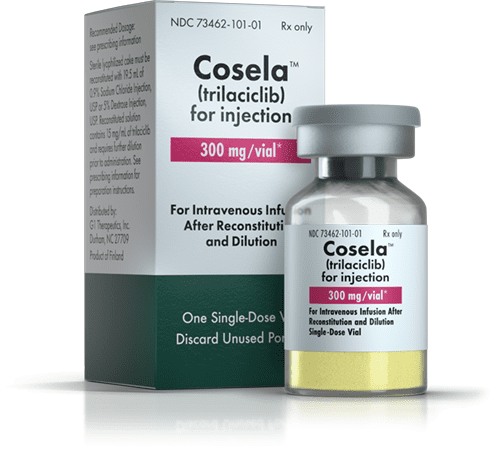Trilaciclib Disease Interactions
There are 3 disease interactions with trilaciclib.
Trilaciclib (applies to trilaciclib) liver dysfunction
Moderate Potential Hazard, Moderate plausibility. Applicable conditions: Liver Disease
The use of trilaciclib is not recommended in patients with moderate or severe liver dysfunction as its pharmacokinetics have not been studied in these patients. No dosage adjustment is recommended for patients with mild liver dysfunction.
Trilaciclib (applies to trilaciclib) pulmonary dysfunction
Moderate Potential Hazard, Moderate plausibility. Applicable conditions: Pulmonary Impairment
The administration of cyclin-dependent kinases 4/6 inhibitors such as trilaciclib can cause severe, life-threatening, or fatal interstitial lung disease (ILD) and/or pneumonitis. It is recommended to exercise caution when using this agent in patients with a history of ILD and/or pneumonitis. Monitor for pulmonary symptoms indicative of ILD/pneumonitis. Interrupt and evaluate patients with new or worsening symptoms suspected to be due to ILD/pneumonitis. Permanently discontinue treatment in patients with recurrent symptomatic or severe/life-threatening ILD/pneumonitis.
Trilaciclib (applies to trilaciclib) renal dysfunction
Moderate Potential Hazard, Moderate plausibility.
No clinically significant differences in the pharmacokinetics of trilaciclib were observed in patients with mild to moderate renal dysfunction. The effect on the pharmacokinetics in patients with severe renal dysfunction, end-stage renal dysfunction, or dialysis has not been studied. Care should be exercised when using this agent in these patients.
Switch to professional interaction data
Trilaciclib drug interactions
There are 9 drug interactions with trilaciclib.
More about trilaciclib
- trilaciclib consumer information
- Check interactions
- Compare alternatives
- Side effects
- Dosage information
- During pregnancy
- Drug class: other immunostimulants
- Breastfeeding
- En español
Related treatment guides
Drug Interaction Classification
| Highly clinically significant. Avoid combinations; the risk of the interaction outweighs the benefit. | |
| Moderately clinically significant. Usually avoid combinations; use it only under special circumstances. | |
| Minimally clinically significant. Minimize risk; assess risk and consider an alternative drug, take steps to circumvent the interaction risk and/or institute a monitoring plan. | |
| No interaction information available. |
See also:
Further information
Always consult your healthcare provider to ensure the information displayed on this page applies to your personal circumstances.


